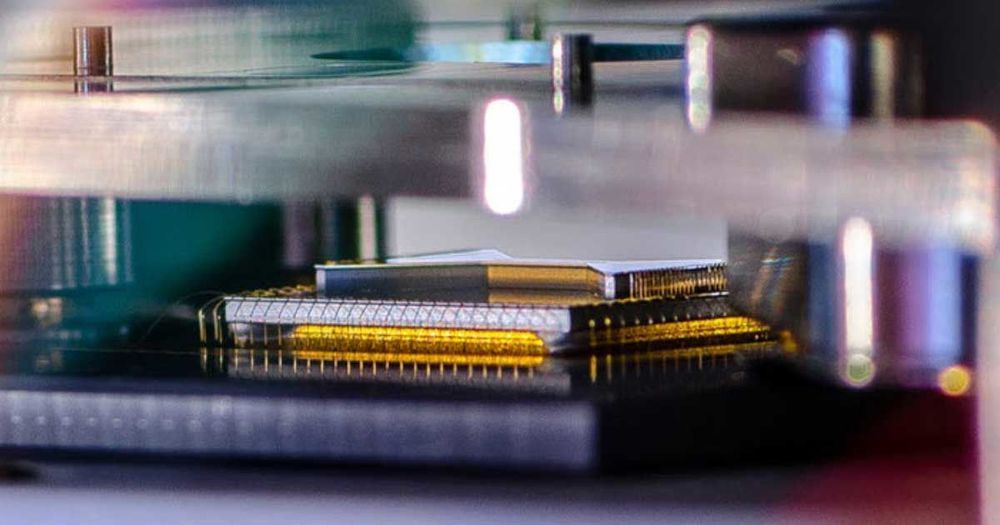As the threat of cyber-attacks on critical infrastructure such as power grids ramps up, the Securing Energy Infrastructure Act (SEIA) is taking technology back to its retro roots. But is it a good idea?



A nuclear-powered bullet train that was equipped with amenities more appropriate to a cruise ship, it had luxuries such as swimming pools and shopping centers.
Supertrain was an American television drama/adventure series that ran on NBC from February 7 to May 5, 1979. Nine episodes were made. Most of the cast of a given episode were guest stars. The production was elaborate, with huge sets and a high-tech model train for outside shots.
On February 7th, 1979, thousands of Americans were introduced to the Supertrain, which ran from New York to Los Angeles. Nuclear-powered, the super-wide-bodied train topped out at 190 miles per hour and boasted on-board luxuries like a swimming pool, a discotheque, a shopping center and a movie theater. It even had a dedicated on-board Social Director.

An instrument aboard NASA’s New Horizons is sending back data that could help scientists predict when the unmanned deep-space probe will reach interstellar space. Using the Solar Wind Around Pluto (SWAP) instrument aboard the spacecraft, a team of researchers led by Southwest Research Institute are learning more about how the solar winds change in the outer regions of the solar system.
Though the solar system may look like a big ball of nuclear fire at the center surrounded by a scattering of tiny, solid objects sitting in a lot of very hard vacuum, all that nothingness is permeated by the solar winds – an unceasing flow of ionized particles from the Sun that forms an uneven bubble around our family of planets called the heliosphere.
The outer limit of the heliosphere is where it encounters materials from interstellar space. This is the point where the solar wind slow down to subsonic speeds due to interacting and then is stopped altogether by the interstellar medium. These two points are called, respectively, the termination shock and the heliopause.

3D printing technology is changing and will change pretty much everything. Besides printing the intermittent novelty project at home with a desktop printer, additive manufacturing or 3D printing technology is being used in a large group of businesses changing the manner in which we design, build, create, and even eat.
NASA is planning to use 3D printing technology to construct housing on Mars for future colonies while organizations like byFlow are using the emerging technology to create food and intricate edible tableware. The uses and applications appear to be both limitless and exciting, yet this is only the beginning. Things being what they are, what sort of changes can we expect to see in the medical industry?

The reason why the process is so incredibly fast is because the excavation and laying of the foundation on-site can be completed at the same time as the construction of the modules. It would also require nearly 70 percent less on-site, labor according to The B1M.
In fact, most of the segments of Marriott’s planned hotel are being built in Poland and then shipped across the Atlantic. The rooms will be ready made according to Marriott, including bedding and even toiletries.
“We wanted to demonstrate that modular building can do more than just harness the efficiencies of the factory,” Danny Forster, owner of the firm that designed the tower, said in an April press release. “It can produce a graceful and iconic tower. And yes, it can do so at the rate of an entire floor a day.”

An estimated 4,000 people are waiting for heart transplants, but the donated organs only last six hours outside a body. Duke University’s method, could extend that timeline and save lives.


As the number of satellites and space junk in orbit continues to increase, so do the chances of these human-made objects colliding with one another, potentially creating more debris that could threaten other healthy spacecraft. Now, a new tool shows just how crowded Earth orbit is by tracking space objects through their close calls every couple of seconds.
Called the “Conjunction Streaming Service Demo,” the graph tool illustrates in real time the sheer number of space objects — out of an assortment of 1,500 items in low Earth orbit — that get uncomfortably close to one another in a period of 20 minutes. While the X-axis keeps track of the time, the Y-axis shows the short distance between two approaching space objects, ranging from five kilometers to the dreaded zero kilometers. On the graph is a series of arcs demonstrating when two pieces of debris rapidly move toward one another, make their closest approach, and then speed away.